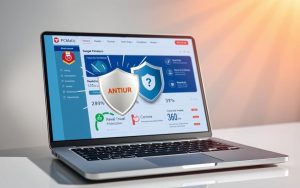Table of Contents
The implementation of e-government systems has revolutionized the way public services are delivered. It involves the use of information and communication technologies by the government to provide efficient and accessible public services. However, with the increased reliance on digital platforms, cybersecurity has become a crucial concern. Protecting government websites, ensuring data privacy, and safeguarding online transactions are some of the key challenges in maintaining cybersecurity in e-government services.
Importance of Cybersecurity in E-Government
Ensuring robust cybersecurity measures is vital for maintaining the integrity of e-government services. With the increasing reliance on digital platforms for public services, online security has become a top priority for governments worldwide. Government websites and online platforms are prime targets for cyber attacks due to the sensitive nature of the data and transactions involved.
Implementing strong data protection and network security measures is essential to safeguard against cyber threats. Breaches in government systems can result in severe consequences such as data breaches, identity theft, and financial losses. It is crucial for governments to protect citizen data, maintain public trust, and prevent unauthorized access to government systems.
“Ensuring robust cybersecurity measures is vital for maintaining the integrity of e-government services.”
The consequences of successful cyber attacks on e-government services can be far-reaching. They can disrupt public services, compromise sensitive information, and undermine public confidence in the government’s ability to protect citizen data. Governments must invest in the necessary cybersecurity infrastructure and strategies to enhance the security and reliability of e-government services.
| Key Reasons for Cybersecurity in E-Government |
|---|
| Protection of sensitive citizen data |
| Prevention of data breaches and identity theft |
| Maintaining public trust in e-government services |
| Preventing unauthorized access to government systems |
The Consequences of Inadequate Cybersecurity
If governments fail to prioritize cybersecurity in e-government services, the potential consequences can be severe. Risks such as data breaches, system vulnerabilities, and unauthorized access can lead to significant financial losses, reputational damage, and legal complications. Moreover, the impact on citizens can be devastating, as their sensitive information may be exposed, leading to identity theft and fraud.
By focusing on cybersecurity measures, governments can ensure the safe and secure delivery of online public services, protecting citizen data and maintaining public trust. With the constantly evolving landscape of digital threats, government agencies must remain vigilant and proactive in their efforts to combat cyber attacks and mitigate risks.
Key Takeaways
- Cybersecurity is of utmost importance in e-government services to protect sensitive data and maintain public trust.
- Effective data protection and network security measures are vital in safeguarding against cyber threats.
- Inadequate cybersecurity can lead to severe consequences, including data breaches and identity theft.
- Investing in cybersecurity infrastructure is crucial for the reliability and security of e-government services.
Challenges in E-Government Cybersecurity
Ensuring robust cybersecurity in e-government services is no small feat. The implementation of digital platforms and the increasing sophistication of cyber threats present numerous challenges that governments must navigate. Let’s take a closer look at some of the key challenges faced in maintaining the security of e-government services:
Lack of Awareness and Training
A major challenge is the lack of awareness and training among government employees. Many employees may not have a deep understanding of cybersecurity best practices, making them more susceptible to cyber threats. It is crucial for governments to provide regular training and awareness programs to educate employees about potential risks and how to mitigate them. By fostering a culture of cyber awareness, governments can strengthen their defense against digital threats.
Complexity of Managing Cybersecurity at Scale
E-government services often involve large-scale operations, with multiple government agencies and departments interconnected. Managing cybersecurity across these vast networks can be highly complex. It requires effective coordination, communication, and collaboration between various stakeholders, as well as the development of consistent cybersecurity policies and procedures. Governments must invest in robust cybersecurity infrastructure and implement centralized monitoring and response mechanisms to mitigate risks effectively.
Evolution of Digital Threats
Cyber threats are constantly evolving and becoming increasingly sophisticated. Hackers are continuously finding new ways to exploit vulnerabilities in government systems. Governments must stay updated with the latest threat intelligence and invest in advanced cybersecurity technologies to detect, prevent, and respond to emerging threats effectively. Regular security audits and vulnerability assessments can help identify and address potential weaknesses, enhancing the overall security posture of e-government services.
As governments continue to embrace digital transformation, tackling these challenges head-on is vital to maintaining the integrity and security of e-government services. By prioritizing cybersecurity, investing in employee training, implementing robust infrastructure, and staying ahead of evolving threats, governments can build a secure digital ecosystem that enhances public trust and ensures the safety of online transactions and sensitive citizen data.
| Challenges in E-Government Cybersecurity | Solutions |
|---|---|
| Lack of Awareness and Training | Regular training and awareness programs for employees |
| Complexity of Managing Cybersecurity at Scale | Investment in robust infrastructure and centralized monitoring |
| Evolution of Digital Threats | Staying updated with threat intelligence and advanced cybersecurity technologies |
Key Components of E-Government Cybersecurity
Effective cybersecurity in e-government services relies on the implementation of various key components. These components work together to create a secure online environment that protects sensitive data, prevents unauthorized access, and ensures the integrity of government systems. Here are the essential components of e-government cybersecurity:
Network Security
Network security is a fundamental component of e-government cybersecurity. It involves implementing robust measures to protect the government’s computer networks from unauthorized access, data breaches, and cyber threats. This includes the use of firewalls, intrusion detection systems, and secure protocols for data transmission.
Encryption Protocols
Encryption plays a vital role in safeguarding sensitive data in government systems. By encrypting information, it becomes unreadable to unauthorized users, ensuring that even if data is intercepted, it cannot be deciphered. Implementing strong encryption protocols helps to protect confidential citizen and government information.
Secure Authentication and Authorization
Secure authentication and authorization processes help ensure that only authorized individuals can access government systems and services. This includes the use of strong passwords, multi-factor authentication, and secure login mechanisms. By implementing these measures, governments can reduce the risk of unauthorized access and identity theft.
Regular Security Audits
Regular security audits are essential to identify vulnerabilities and weaknesses in e-government systems. These audits help governments assess the effectiveness of their cybersecurity measures and identify areas for improvement. By conducting thorough security audits, governments can proactively address any potential risks and enhance their overall security posture.
Employee Training
Human error is a significant factor in cybersecurity breaches. Therefore, providing comprehensive training to government employees is crucial. Training programs should educate employees about cybersecurity best practices, phishing awareness, and the importance of data protection. By ensuring that employees are well-informed and vigilant, governments can mitigate the risk of internal security incidents.
| Component | Description |
|---|---|
| Network Security | Implementation of measures to protect computer networks from unauthorized access and cyber threats. |
| Encryption Protocols | Use of encryption to secure sensitive data and protect it from unauthorized access. |
| Secure Authentication and Authorization | Processes to ensure that only authorized individuals can access government systems and services. |
| Regular Security Audits | Periodic assessments to identify vulnerabilities and weaknesses in e-government systems. |
| Employee Training | Comprehensive training programs to educate government employees about cybersecurity best practices. |
Best Practices for Cybersecurity in E-Government
Implementing effective cybersecurity measures is crucial for ensuring the safety and integrity of e-government services. By following best practices, governments can mitigate cyber risks, protect sensitive data, and enhance network security. Here are some key best practices for cybersecurity in e-government:
Create a Strong Password Policy
One of the fundamental steps in maintaining cybersecurity is to enforce a strong password policy. Government agencies should require users to create passwords that are complex, unique, and regularly updated. This helps prevent unauthorized access to government systems and reduces the risk of password-related security breaches.
Implement Multi-Factor Authentication
Multi-factor authentication adds an extra layer of security to e-government services. By requiring users to provide additional authentication factors such as biometrics or one-time passcodes, the risk of unauthorized access is significantly reduced. Implementing multi-factor authentication helps protect sensitive data and strengthens the overall security posture of e-government platforms.
Regularly Update and Patch Software
Keeping software and systems up to date is crucial for addressing vulnerabilities and mitigating potential security risks. Government agencies should establish a regular patching and updating schedule to ensure that all systems and applications are running on the latest secure versions. Regular updates help address known security vulnerabilities and protect against emerging cyber threats.
Enable Real-Time Network Monitoring
Real-time monitoring of network activities allows government agencies to detect and respond to potential security incidents promptly. By monitoring network traffic, unusual activities, and potential signs of intrusion can be identified and addressed in a timely manner. Real-time monitoring helps in identifying and mitigating threats, preventing data breaches, and maintaining the overall security of e-government services.
Provide Ongoing Employee Training on Cybersecurity
Employees play a critical role in maintaining cybersecurity in e-government services. It is important to provide regular training and awareness programs to educate employees about potential cyber threats, safe online practices, and the importance of data protection. Ongoing training helps employees stay vigilant, identify potential risks, and adhere to best practices in cybersecurity.
Table: Key Best Practices for Cybersecurity in E-Government
| Best Practice | Description |
|---|---|
| Create a Strong Password Policy | Enforce complex and regularly updated passwords to prevent unauthorized access. |
| Implement Multi-Factor Authentication | Add an extra layer of security by requiring additional authentication factors. |
| Regularly Update and Patch Software | Keep systems and software up to date to address vulnerabilities. |
| Enable Real-Time Network Monitoring | Monitor network activities to detect and respond to potential security incidents. |
| Provide Ongoing Employee Training | Educate employees about cybersecurity risks and best practices. |

Cybersecurity and Data Privacy in E-Government
In the realm of e-government services, cybersecurity and data privacy are vital considerations. With the increasing reliance on digital platforms for public services, safeguarding sensitive data and ensuring privacy has become paramount. Governments must adhere to strict data protection regulations and implement measures to handle citizen data securely.
One of the key aspects of maintaining cybersecurity in e-government services is implementing robust encryption measures. By encrypting the data transmitted and stored on government platforms, sensitive information remains protected from unauthorized access. Encryption protocols such as SSL/TLS ensure secure communication between users and government systems, minimizing the risk of data breaches.
Furthermore, consent-based data sharing is crucial for maintaining data privacy in e-government services. Government agencies should only share data with the explicit consent of the individuals involved, ensuring that their privacy rights are respected. Transparent data handling practices, along with comprehensive privacy policies, foster trust and confidence in the e-government ecosystem.
Safeguarding Data Privacy in E-Government
In order to safeguard data privacy, e-government systems must prioritize secure data storage. Implementing secure storage infrastructure and regularly conducting security audits help identify vulnerabilities and prevent data breaches. By aligning with industry best practices and adhering to data protection regulations, governments can assure citizens that their data is handled with the utmost care.
Consent-Based Data Sharing
Consent-based data sharing is fundamental to protecting data privacy in e-government. Governments should strive to provide individuals with control over their personal information, allowing them to decide when and how it is shared. This approach ensures that citizen data is only divulged for necessary and authorized purposes, enhancing trust in the e-government services.
By prioritizing cybersecurity and data privacy, governments can build a secure and reliable e-government ecosystem. Encryption, secure data storage, transparent data handling practices, and consent-based data sharing are all vital components of an effective cybersecurity strategy in e-government services.
Collaboration and Partnerships in E-Government Cybersecurity
Cybersecurity in e-government services requires a collaborative approach, with government agencies partnering with cybersecurity experts, industry leaders, and international organizations. Collaborative efforts and information sharing are essential to address the evolving landscape of digital threats and enhance the overall security of e-government systems.
By collaborating with cybersecurity experts, government agencies can gain valuable insights and expertise in identifying vulnerabilities, developing robust security measures, and mitigating cyber risks. These partnerships enable the sharing of knowledge and best practices, ensuring that governments stay updated with the latest cybersecurity trends and technologies.
Industry partnerships also play a crucial role in strengthening e-government cybersecurity. Working closely with technology providers and security vendors allows government agencies to leverage innovative solutions and tools to protect against emerging threats. These partnerships enable the implementation of cutting-edge technologies such as artificial intelligence and machine learning, which can enhance the detection and response capabilities of e-government systems.
International collaboration is equally important in addressing global cybersecurity challenges. Governments can participate in international forums and partnerships to share information and coordinate efforts in combating cyber threats. This collaborative approach strengthens the collective resilience of e-government services and promotes a global cybersecurity ecosystem.
Benefits of Collaboration and Partnerships
The benefits of collaboration and partnerships in e-government cybersecurity are manifold. By pooling resources and expertise, government agencies can develop comprehensive strategies and frameworks to tackle cyber threats effectively. This collaborative approach also fosters a culture of information sharing and continuous learning, allowing governments to stay one step ahead of cybercriminals.
Moreover, collaboration and partnerships enable governments to benefit from the diverse perspectives and experiences of different stakeholders. By involving cybersecurity experts, industry leaders, and international organizations, government agencies can gain valuable insights and access to cutting-edge technologies and solutions.
Table: Examples of Collaboration and Partnerships in E-Government Cybersecurity
| Collaboration/Partnership | Description | Benefits |
|---|---|---|
| Public-Private Partnerships | Collaboration between government agencies and private sector organizations to develop and implement cybersecurity strategies. | Access to industry expertise, innovative solutions, and shared resources. |
| Information Sharing Networks | Establishment of networks and platforms for sharing cybersecurity threat intelligence and best practices. | Real-time threat detection, early warning mechanisms, and improved incident response. |
| International Cooperation | Participation in global cybersecurity initiatives, partnerships, and collaboration with international organizations. | Exchange of knowledge, coordination of efforts, and enhanced global cyber resilience. |
| Cybersecurity Research and Development Partnerships | Collaboration with academic institutions and research organizations to drive innovation in cybersecurity. | Access to cutting-edge research, development of new technologies, and talent acquisition. |
Collaboration and partnerships are essential elements of a holistic approach to e-government cybersecurity. By working together, governments can leverage the expertise and resources of various stakeholders to build resilient and secure digital ecosystems, ensuring the trust and confidence of citizens in e-government services.
The Impact of COVID-19 on E-Government Cybersecurity
The COVID-19 pandemic has significantly affected e-government cybersecurity, introducing new challenges and risks for governments and organizations worldwide. With the rapid shift towards remote work and increased reliance on digital platforms, cybercriminals have exploited vulnerabilities in e-government services, posing threats to online security and data protection.
As governments raced to implement online services and digital platforms to continue providing essential public services during the pandemic, cybercriminals seized the opportunity to launch sophisticated cyber attacks. Phishing attacks, ransomware, and malware infections have witnessed a surge, targeting individuals and government systems. With citizens relying heavily on e-government services for various transactions and information sharing, the consequences of cyber attacks are more detrimental than ever.
Furthermore, the unpredictable and rapidly changing nature of the COVID-19 crisis has created an environment where cybercriminals can exploit people’s anxieties and fears. Social engineering tactics, such as impersonating health authorities or sending fake COVID-19 related information, have become prevalent. These tactics aim to deceive individuals into sharing sensitive information or unknowingly downloading malicious software, compromising cybersecurity measures.
To address the impact of COVID-19 on e-government cybersecurity, governments must prioritize implementing robust security measures. This includes enhancing network security, regularly updating software and systems, implementing multi-factor authentication, and conducting comprehensive security audits. Additionally, continuous employee training and awareness programs are crucial to educate individuals about potential cyber threats and best practices for online security.

The Impact of COVID-19 on E-Government Cybersecurity: Key Points
- The COVID-19 pandemic has resulted in increased cyber attacks on e-government services.
- Phishing attacks, ransomware, and malware infections have witnessed a surge during the pandemic.
- Social engineering tactics exploit people’s anxieties and fears related to COVID-19.
- To mitigate the impact of COVID-19 on e-government cybersecurity, governments must prioritize implementing robust security measures.
- Enhancing network security, regular system updates, and employee training are crucial steps in protecting e-government services.
| COVID-19’s Impact on E-Government Cybersecurity | Preventive Measures |
|---|---|
| Increased cyber attacks | Enhance network security |
| Surge in phishing attacks | Regular software updates and security patches |
| Ransomware and malware infections | Implement multi-factor authentication |
| Social engineering tactics | Conduct comprehensive security audits |
| Provide continuous employee training on cybersecurity awareness |
Future Trends in E-Government Cybersecurity
The field of cybersecurity in e-government services is constantly evolving to keep up with the ever-changing digital landscape. As technology advances, new trends emerge, offering opportunities for governments to enhance the security of their online platforms. By embracing these future trends, governments can stay one step ahead of cyber threats and protect critical infrastructure and citizen data.
One of the key future trends in e-government cybersecurity is the use of artificial intelligence (AI). AI-powered solutions can help governments detect and respond to cyber threats in real-time. Machine learning algorithms can analyze vast amounts of data and identify patterns that indicate potential security breaches. This proactive approach enables governments to mitigate risks before they escalate and minimize the impact of cyber attacks.
Another promising future trend is the application of blockchain technology in e-government services. Blockchain can enhance data integrity and security by providing a decentralized and tamper-proof system. By leveraging blockchain, governments can ensure transparent and secure transactions, prevent data manipulation, and increase trust among citizens.
Biometrics is also gaining traction in e-government cybersecurity. Biometric authentication methods such as fingerprint, iris, or facial recognition offer a high level of security and identity verification. Implementing biometric solutions can significantly reduce the risk of unauthorized access, ensuring that only authorized individuals can access government systems and services.
Future Trends in E-Government Cybersecurity
| Trend | Description |
|---|---|
| Artificial Intelligence (AI) | AI-powered solutions for real-time threat detection and response. |
| Blockchain Technology | Decentralized and tamper-proof system for enhanced data security. |
| Biometrics | Highly secure and reliable authentication methods. |
As the digital landscape continues to evolve, governments must adapt to the emerging trends in e-government cybersecurity. By embracing technologies such as artificial intelligence, blockchain, and biometrics, governments can enhance the security and resilience of their online platforms. However, it is essential to strike a balance between security and privacy to ensure that citizens’ data is protected while still providing convenient and accessible e-government services.

Conclusion
In the world of e-government services, cybersecurity is paramount. Protecting sensitive data, ensuring secure online transactions, and maintaining public trust are key priorities for governments. By implementing robust cybersecurity measures and collaborating with stakeholders, governments can enhance the security and reliability of their online platforms.
With the increasing reliance on digital platforms, the need for online security is more critical than ever. Governments must prioritize cybersecurity to mitigate risks and prevent unauthorized access to government systems. Implementing best practices, such as regular software updates, strong password policies, and real-time network monitoring, can help safeguard against potential cyber threats.
Data protection is a fundamental aspect of cybersecurity in e-government services. Government agencies must adhere to strict data privacy regulations and implement secure data handling practices. Encryption, secure data storage, and transparent data sharing policies are essential in ensuring the confidentiality and privacy of citizen data.
As technology continues to advance, the future of e-government cybersecurity is constantly evolving. Governments must stay updated with the latest trends and adopt innovative solutions to counter emerging threats. By investing in cybersecurity infrastructure and collaborating with industry experts, governments can create a secure and trustworthy digital environment for their citizens.
FAQ
Why is cybersecurity important in e-government services?
Cybersecurity is crucial in e-government services to protect sensitive data, ensure secure online transactions, and maintain public trust.
What are the key challenges in e-government cybersecurity?
The key challenges in e-government cybersecurity include vulnerabilities in government systems, lack of awareness and training among employees, and the complexity of managing cybersecurity on a large scale.
What are the key components of e-government cybersecurity?
The key components of e-government cybersecurity include network security measures, encryption protocols, secure authentication and authorization processes, regular security audits, and employee training.
What are the best practices for cybersecurity in e-government?
The best practices for cybersecurity in e-government include regular updates and patches for software and systems, strong password policies, multi-factor authentication, real-time monitoring of network activities, and continuous employee training on cybersecurity awareness.
How can data privacy be protected in e-government?
Data privacy in e-government can be protected by implementing encryption, secure data storage, consent-based data sharing, and transparent data handling practices.
How can collaboration and partnerships improve e-government cybersecurity?
Collaboration and partnerships with cybersecurity experts, industry partners, and international organizations can help share knowledge, exchange best practices, and develop robust cybersecurity strategies in e-government.
How has COVID-19 impacted e-government cybersecurity?
The COVID-19 pandemic has increased cyber threats in e-government services, emphasizing the need for stronger cybersecurity measures due to the increased reliance on remote work and online services.
What are the future trends in e-government cybersecurity?
The future trends in e-government cybersecurity include the adoption of emerging technologies such as artificial intelligence, blockchain, and biometrics to enhance security and mitigate risks.
How can governments enhance the security of e-government services?
Governments can enhance the security of e-government services by prioritizing cybersecurity measures, implementing best practices, and investing in robust cybersecurity infrastructure.
Source Links
- https://www.igi-global.com/chapter/cybersecurity-issues-and-challenges-for-e-government-during-covid-19/302729
- https://scholarworks.calstate.edu/downloads/mc87pt75n
- https://www.mdpi.com/2624-800X/1/2/17









